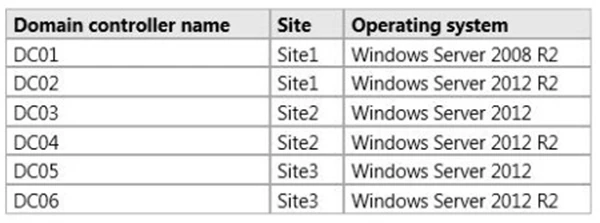The network contains an Active Directory domain named contoso.com that has three Active Directory sites named Site1, Site2, and Site3. The New York office is located in Site1. The Chicago office is located in Site2. The Atlanta office is located in Site3. There is a local IT staff to manage the servers in each site. The current domain controllers are configured as shown in the following table.

The company plans to open a fourth office in Montreal that will have a corresponding Active Directory site. Because of budget cuts, a local IT staff will not be established for the Montreal site.
The Montreal site has the following requirements:
✑ Users must be able to authenticate locally.
Users must not have the ability to log on to the domain controllers.
✑ Domain account passwords must not be obtained from servers in the Montreal site.
✑ Network bandwidth between the Montreal site and the other sites must be minimized.
✑ Users in the Montreal office must have access to applications by using Remote Desktop Services (RDS).
You need to recommend a solution for the servers in the Montreal site.
What should you recommend?
